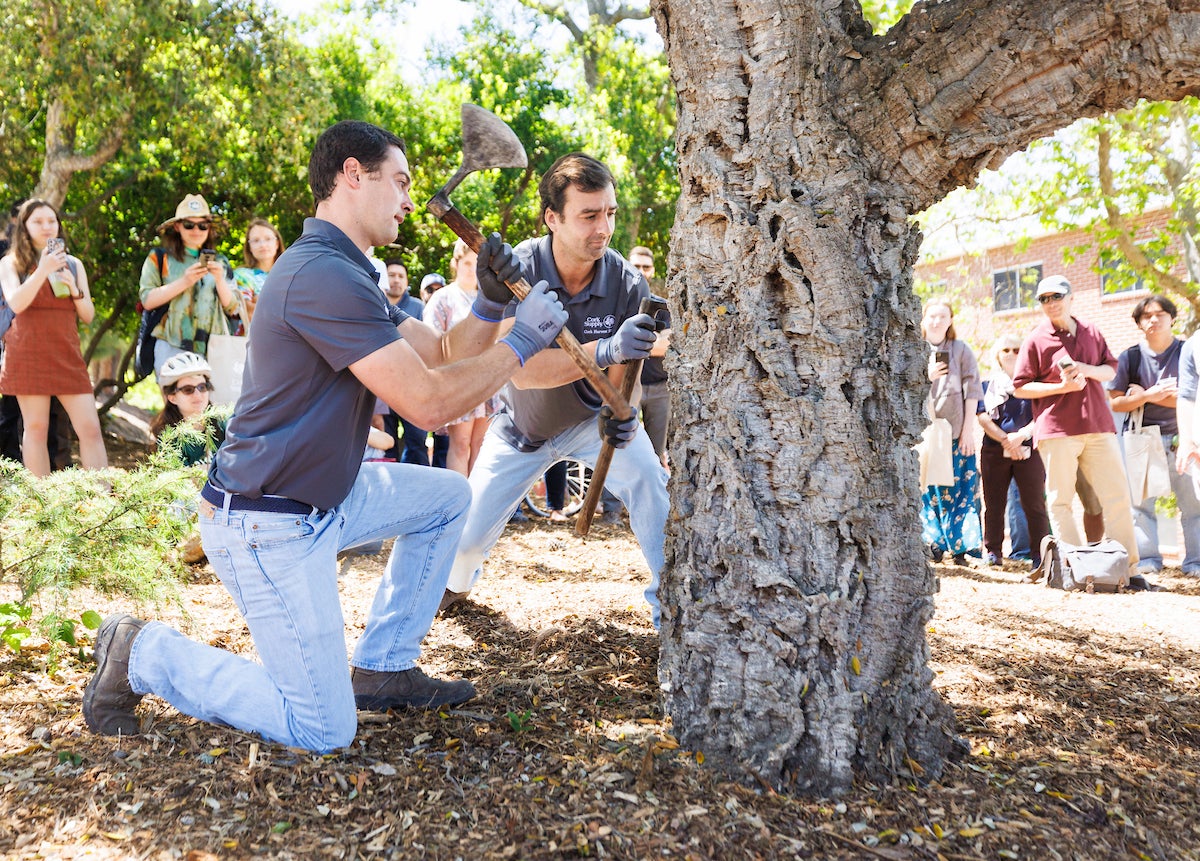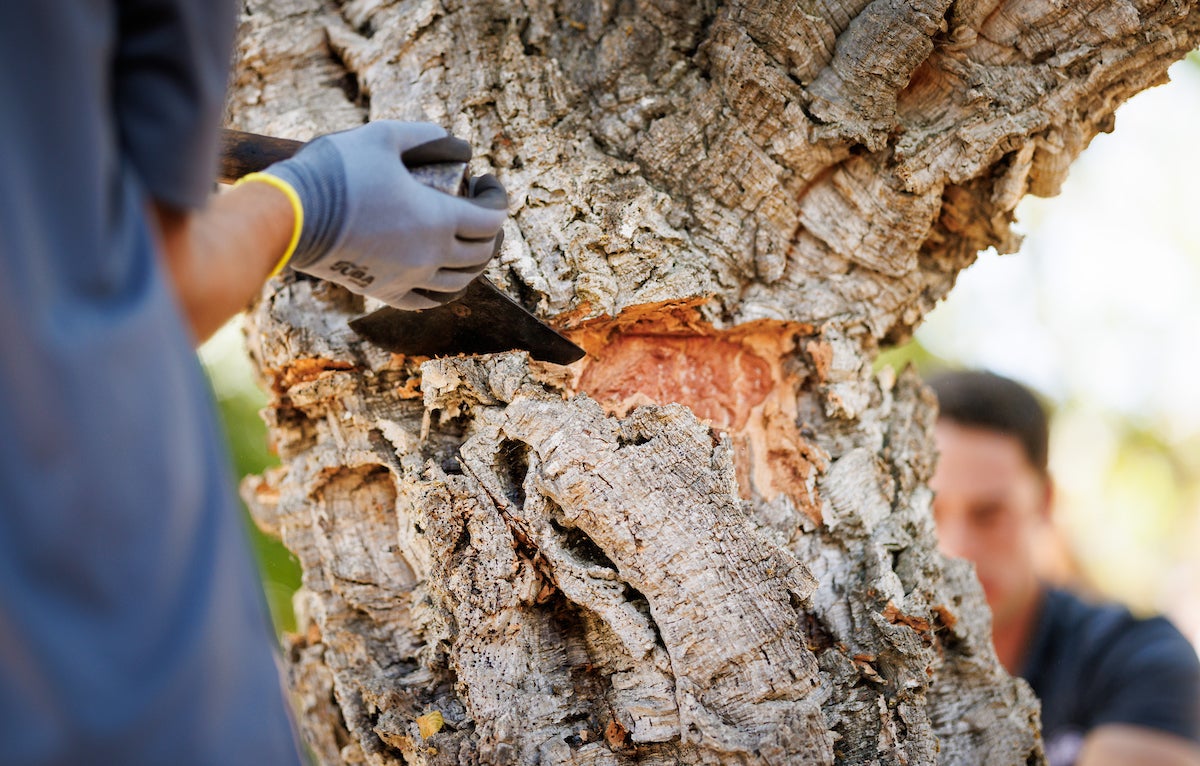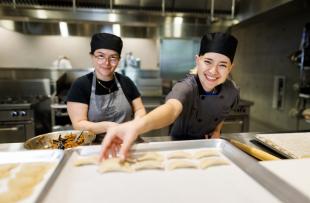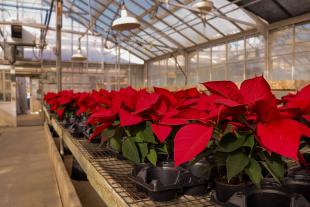Barking Up the Right Tree: Campus’ First Professional Cork Harvest Wows Students

In late May, on the lawn by the North Mountain Residence Halls, students gathered for a rare opportunity to view a cork harvesting demonstration, performed by professionals.
“Cork is this awesome, sustainable material that can be harvested about every 10 years pretty much indefinitely,” said Matt Ritter, biological sciences professor and director of the Cal Poly Plant Conservatory. “This is something you never get to see happen, which is being able to watch very skilled people stripping the bark off a cork oak tree.”

The demonstration was put on by Cork Supply, a company that sells cork all over the world — mostly to winemakers, but also to companies that make industrial products. About 200 people came to the demonstration,150 of which were students from a variety of majors, Ritter said.
“It’s a real Learn by Doing event,” Ritter said. “Cork harvesters are the most highly-paid agricultural workers in the world, and seeing this was a once-in-a-lifetime opportunity.”
Second-year plant science major Maya Peña decided to attend after hearing about the demonstration in her field botany class, taught by Ritter and professor Jenn Yost.
“I was really fascinated to see the harvesting process and was surprised to see how quickly they were able to harvest each tree — I expected it to be a longer and more involved process,” Peña said. “Seeing how much cork was taken off during the event was really neat to watch.”

Peña also said she enjoyed learning about the process of harvesting as well as the different types of jobs available in the horticulture industry — especially in areas that are considered less traditional or well-known.
Graduate student Kyle Nessen said he saw a much smaller cork harvest take place as an undergraduate in 2016, when Ritter harvested a small amount from the trees with a handful of students. But being able to watch professional harvesters work on a larger scale was “really a fun moment for me,” he said.
“It was just great to see people from a different part of the world partake in this highly skilled task that requires specialized tools and training,” he said. “To see the process of how real cork is harvested and collected by skilled practitioners was just a real treat. It’s not something you get to see every day, and that’s one of the wonderful parts of being able to work and hang out on a college campus.”

There are about 50 to 100 cork oak trees on campus, and this is the first time any of them were professionally harvested, Ritter said.
“We asked, and no one at the event had seen cork harvested before,” Ritter said. “This is a classic Cal Poly thing where we provide an opportunity for students to see something they never get a chance to see.”
Want more Learn by Doing stories in your life? Sign up for our monthly newsletter, the Cal Poly News Recap!



